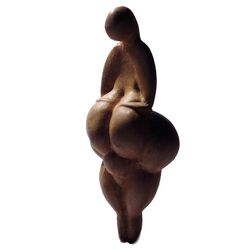Social:Musée de l'Homme
The Musée de l'Homme (French, "Museum of Man" [refers to humankind as a whole, not just men]) is an anthropology museum in Paris, France. It was established in 1937 by Paul Rivet for the 1937 Exposition Internationale des Arts et Techniques dans la Vie Moderne. It is the descendant of the Musée d'Ethnographie du Trocadéro, founded in 1878. The Musée de l'Homme is a research center under the authority of various ministries, and it groups several entities from the CNRS. The Musée de l'Homme is one of the seven departments of the Muséum national d'histoire naturelle. The Musée de l'Homme occupies most of the Passy wing of the Palais de Chaillot in the 16th arrondissement. The vast majority of its collection was transferred to the Quai Branly museum.[1]
History
The Musée de l'Homme has inherited items from historical collections created as early as the 16th century, from cabinets of curiosities, and the Royal Cabinet. These collections were enriched during the 19th century, and they still are today. The aim is to gather in one site everything which defines the human being: man in his evolution (prehistory), man in his unity and diversity (anthropology), man in his cultural and social expression (ethnology).
The majority of the "ethnographic exhibition" from the Musée de l'Armée of the Invalides, as it was then called, is composed of dummies representing people from the colonies, along with weapons and equipment. This material was transferred to the museum in 1910 and 1917.[2] Photos of the Moroccan population, taken by Clérambault, were also displayed there.
Several members of the Musée de l'Homme, such as Paul Rivet, during the German occupation in World War II, formed a resistance group.
Mission

The museum is part of the Musée national d'histoire naturelle. Its original purpose was to gather in a one place all that can define humanity: its evolution, its unity and its variety, and its cultural and social expression.
The creation of the new Musée du quai Branly and MUCEM will be taking the Musée de l'homme's ethnographical collections, breaking with its original mission. This change has aroused many debates because the curatorial choices of the new structure will be dictated more by aesthetic criteria than scientific. The permanent exhibition of the Museum of the Man counted more than 15,000 artifacts, reflecting the artistic but also technical and cultural treasures from five continents. Quai Branly, however, holds only 3500 artifacts, presented without cultural contextualization, chosen for their aesthetic qualities and their "exotic" origins (Africa, Oceania, Americas) and not on educational value. European ethnographical collections are going to be exhibited at MUCEM, and critics believe it is creating an unjustified discontinuity between human cultures.
This situation led the Musée de l'Homme to a redefinition of its mission. Jean-Pierre Mohen and his team tried to arrange the mission of the Museum, without really succeeding in giving it a strong enough muséological program. We shall find in the future Museum, the Human defined through her biological evolution, through its adaptation to its environment, through the elaboration of a culture (by the vector of the communication among others) which defines the highlights of humanity. Finally, it will be question of a conscience of human pressure on its environment as to face the consequences of the evolutions, in the present, for the future.
Renovation
| Parts of this social (those related to section) need to be updated. Please update this social to reflect recent events or newly available information. (April 2016) |
There was a renovation of the museum until 17 October 2015. The total amount of money appropriated for the renovation process was 52 million Euros.[3]
Notable directors and staff scientists
- René-Yves Creston, director of the Arctic section in the 1930s
- Maurice Leenhardt
- André Leroi-Gourhan
- Paul Rivet
- Jacques Soustelle (vice-president in 1938)
- Claude Lévi-Strauss (interim director 1949-1950)
- Germaine Dieterlen (Comité du film ethnographique)
- Jean Rouch (Comité du film ethnographique)
- Henri Victor Vallois
- Zeev Gourarier (Director 2003-2007)
Notable holdings
- The body of Saartjie Baartman was displayed until 1974.
- A crystal skull is held by the museum.
- The skull of René Descartes, scientist, mathematician, physicist, and philosopher also resides in this museum.
- The skull of Suleiman al-Halabi (1777–1800), a Syrian Kurdish student who assassinated Jean-Baptiste Kléber is also there.
- Mapa pintado en papel europeo y aforrado en el indiano, a Mesoamerican pictorial document
See also
- List of museums in Paris
- Relocation of moai objects
References
- ↑ See Quai Branly
- ↑ Gilles Aubagnac, "En 1878, les "sauvages" entrent au musée de l'Armée" in Zoos humains. De la Vénus hottentote aux reality shows, Nicolas Bancel, Pascal Blanchard, Gilles Boëtsch, Eric Deroo, Sandrine Lemaire, edition La Découverte (2002), p.349-354 (in French)
- ↑ Le musée de l'Homme fait sa mue
External links
- Museum's Official web site (in French)
- Bibliothèque du Musée de l'Homme (in French)
 |

